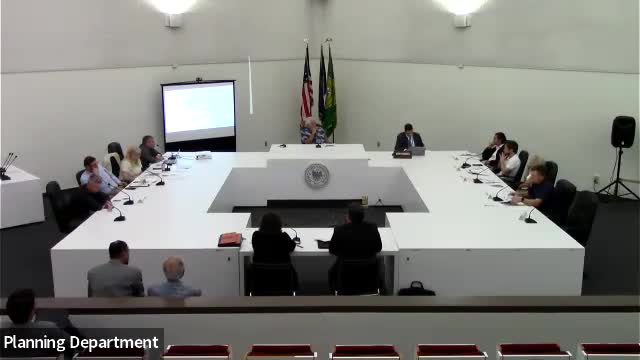Historic structure faces demolition amid preservation debate
June 06, 2024 | Binghamton City, Broome County, New York

This article was created by AI summarizing key points discussed. AI makes mistakes, so for full details and context, please refer to the video of the full meeting. Please report any errors so we can fix them. Report an error »

In a recent government meeting, discussions centered around the criteria for determining the historical significance of structures slated for demolition. The Commission emphasized adherence to the United States Secretary of the Interior Standards for Historic Preservation, outlining key considerations for evaluating a building's historical value.
Among the criteria discussed were whether a structure is an outstanding example of its era, if it represents a rare architectural style, or if it is linked to significant historical figures or events. One member highlighted the importance of a specific residential structure on the North side of a block, noting it as the only remaining example of its kind in the area. The member argued that demolishing this building would erase a vital piece of the neighborhood's history.
Concerns were raised about the lack of efforts to maintain or repurpose the building, with suggestions that economic opportunities could be explored to preserve it rather than allowing it to fall into disrepair. The discussion underscored the building's unique status, with the member asserting that its singularity enhances its historical significance.
As the conversation progressed, it was suggested that if the structure were to be demolished, the Preservation Association should receive any valuable items from within the building, ensuring that remnants of its history are preserved for future generations. The meeting highlighted the ongoing tension between development and preservation, reflecting broader societal debates about the value of historical structures in urban environments.
Among the criteria discussed were whether a structure is an outstanding example of its era, if it represents a rare architectural style, or if it is linked to significant historical figures or events. One member highlighted the importance of a specific residential structure on the North side of a block, noting it as the only remaining example of its kind in the area. The member argued that demolishing this building would erase a vital piece of the neighborhood's history.
Concerns were raised about the lack of efforts to maintain or repurpose the building, with suggestions that economic opportunities could be explored to preserve it rather than allowing it to fall into disrepair. The discussion underscored the building's unique status, with the member asserting that its singularity enhances its historical significance.
As the conversation progressed, it was suggested that if the structure were to be demolished, the Preservation Association should receive any valuable items from within the building, ensuring that remnants of its history are preserved for future generations. The meeting highlighted the ongoing tension between development and preservation, reflecting broader societal debates about the value of historical structures in urban environments.
View full meeting
This article is based on a recent meeting—watch the full video and explore the complete transcript for deeper insights into the discussion.
View full meeting
